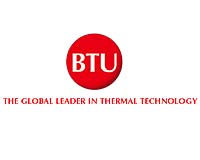 |
Beringe, Netherlands (SPX) Jun 08, 2009 It seems like an open door, checking the quality of incoming wafers and cells before they go into the production process. But this it is still not common in cell and module manufacturing market. Especially cracks, also referred to as micro cracks, that potentially cause wafer and cell breakage during production and have negative quality effects, are still not being controlled with full force. Some steps have been made here and there however huge savings opportunities remain. Ultrasonic Technologies Inc. (US) and RUV Systems BV (Netherlands) did extensive research on this issue in cooperation with cell and module manufacturers in Europe and Asia. The ultrasonic resonance vibrations (RUV) technology was used to test wafers and cells on cracks and their effects on breakage during production. The goal was to determine what part of breakage during production is caused by process equipment and what part by the quality of incoming products. The results were striking. It was confirmed that in general the majority of breakage in cell and wafer manufacturing was caused by cracks in incoming wafers or cells. By rejecting damaged wafers and cells the breakage rates in production were decreased by 21% up to the incredible amount of 88%. Generally you could say that the other part of the breakage is being caused by process equipment. This means loads of cash is being wasted in the solar factory every day. Money is invested into wafers and cells that will not make it to the end of the production line. For example in a cell manufacturing line with a capacity of 1.800 cells/hr, this leads to a loss of 500k up to more than 2 million euro's each year. A very expensive bottomless pit you could say. Losses due to quality problems caused by cracks in a later stage, like claims on reduction of module capacity, are not included. Conclusion: Although tuning of process equipment can and will improve yield in general, the focus for process improvement should be on incoming and outgoing inspection of wafers and cells. Investing in process improvement at this moment is limited due to the current financial market situation that almost everybody is facing. That is understandable. However, the financial resources for such investments are pretty obvious. This process improvement research was done with an innovative ultrasonic analysis, based the frequency response curve of the crystalline material. It is more reliable than optical detection and is available for offline and inline use in wafer, cell and module production. Share This Article With Planet Earth
Related Links RUV Systems in The Netherlands All About Solar Energy at SolarDaily.com
 MERIDIAN In-Line Diffusion System Wins Award
MERIDIAN In-Line Diffusion System Wins AwardNorth Billerica MA (SPX) Jun 08, 2009 BTU International has been awarded the 'Industry Choice' International Solar Technology Award. The award was presented during a ceremony at the Intersolar Munich show in Germany. The International Solar Technology Awards are designed to acknowledge and recognize achievements in the creation and development of solar technology. Emphasis is placed on real-world technical advancements require ... read more |
|
| The content herein, unless otherwise known to be public domain, are Copyright 1995-2009 - SpaceDaily. AFP and UPI Wire Stories are copyright Agence France-Presse and United Press International. ESA Portal Reports are copyright European Space Agency. All NASA sourced material is public domain. Additional copyrights may apply in whole or part to other bona fide parties. Advertising does not imply endorsement,agreement or approval of any opinions, statements or information provided by SpaceDaily on any Web page published or hosted by SpaceDaily. Privacy Statement |